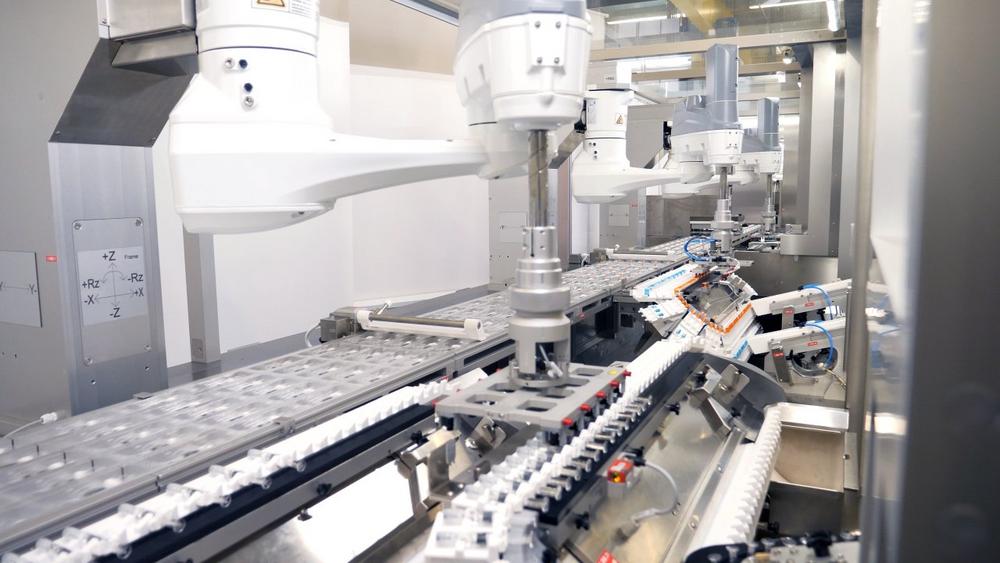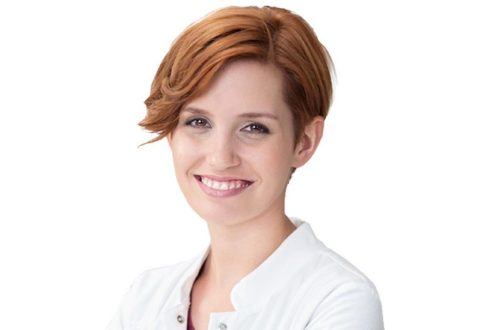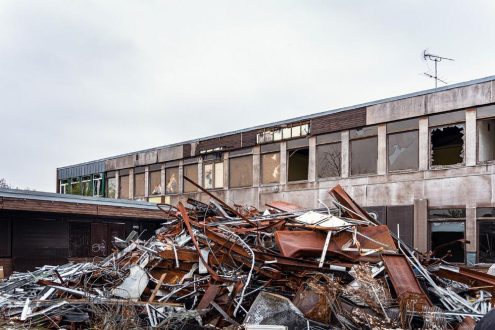
Proven packaging expertise
Parenteral is better: This is the guiding principle of physicians for numerous medications. It means avoiding the “detour” through the digestive tract and delivering active ingredients directly to the bloodstream or tissue, for example, with syringes, pens, and other drug delivery devices.
Uhlmann Pac-Systeme develops and manufactures the perfect secondary packaging systems for parenteral products. The injection devices used to administer the medications are typically packaged in single-dose blister packs containing several different components. To accommodate this format, Uhlmann developed the modular UPS 5 blister machine, which can be expanded to adapt to different user requirements.
Uhlmann recently supplied the longest and most powerful UPS 5 system yet to a global pharmaceutical company that produces a medication set consisting of a disposable syringe and a two-component active ingredient. Each blister therefore contains four components: a syringe filled with ingredient 1, two needles, and a vial containing active ingredient 2. Their combination produces a single injectable dose of the active ingredient.
For this project, Uhlmann chose to use SCARA robots from Stäubli. These precise four-axis robots, mounted directly on each station’s machine frame, place the parenteral products into blisters formed by the UPS 5. Uhlmann’s SyPro and LiPro feeders deliver the products to each station. Individually configured robot grippers, also developed in-house, allow medication sets to be packaged at high speed while complying with pharmaceutical industry requirements.
Three robots, four components, one blister
The project engineers at Uhlmann Pac-Systeme have successfully addressed this packaging challenge by utilizing three Stäubli TS2-60 SCARA robots and ensuring maximum flexibility with the addition of an extra robot station that is not currently in use. This configuration will enable the system to package even more complex pharmaceutical products in the future.
The first workstation of the UPS 5 produces the blister cavity: Using compressed air, the machine heats and forms a PET film into the desired shape at the “forming station” and then cools it again in a matter of seconds. The UPS 5 can produce blisters with a depth of up to 40 mm, but for this system, a depth of just under 20 mm is sufficient. A total of 10 blisters are arranged in parallel and fed to the following robot stations.
First robot station: Inserting filled syringes
The first robot station is used to place filled syringes into the blisters. A highly dynamic Stäubli SCARA TS2-60 is put through its paces, reliably inserting an impressive 200 syringes per minute. They are presented to the four-axis unit via a SyPro feeder specially developed by Uhlmann for sensitive glass syringes. The syringes are initially transported in a suspended vertical position and gently rotated 90 degrees shortly before pickup, allowing the robot’s vacuum gripper to pick up and place 10 syringes at a time.
Second station: Handling 2 x 200 needles per minute
At the second station, two different needles – color-coded in blue and orange, for example – are added. The speed is therefore twice as fast: A second, identical robot places 400 needles per minute into the blisters.
Janina Triska, Project Manager at Uhlmann Pac-Systeme, explains why each blister needs two different needles: “As with many other parenterally administered drugs, this injectable agent requires two components to be mixed before administration. Once combined, the active ingredient is released. In this case, one component is contained in the syringe, and the other is contained in the vial. One needle is used to draw the contents of the vial into the barrel of the syringe, while the other is used to administer the medication.”
A second SyPro feeder is used at this station, but it uses a different transport concept and feeds the needles side by side. A closer look at the insertion process reveals that the robot, which picks up and inserts 10 needles at a time, operates through two distinct cycles. Janina Triska: “This is the only way we can achieve the required high output across the two blister rows and ensure that 200 blue and 200 orange needles are inserted.”
Station 3: The vials are coming
At the third station, a third identical robot places vials containing the second ingredient into the blister. Here, the vials are transported upright on a servo-controlled LiPro feeder and rotated by 90 degrees at the pickup point. The TS2-60 uses its vacuum gripper to remove 10 vials at a time and place them in the corresponding blisters simultaneously. In the next steps, the UPS 5 routes the assembled blisters through automated visual inspection, seals them, and then separates them at the punching station. Only perfect blisters proceed to the cartoning machine, which packs them into folding boxes.
The blister machine has a fourth feeding unit, which is also equipped with a robot, but it is not currently in use. Janina Triska explains why: “The customer wanted not only a very powerful system, but also a very flexible one. That’s why we designed the machine to allow for the addition of another component. However, this feature is not in use at the moment.”
Stäubli robots: The benchmark for pharmaceutical applications
All four stations – and UPS 5 systems in general – are equipped with Stäubli TS2-60 SCARA robots for good reasons: This type of robot is especially prevalent in pharmaceutical manufacturing. In addition to superior hygienic design, the key factors here are high precision, long service life, and impressive dynamics, which make a decisive contribution to meeting cycle time specifications.
The system is designed to be as simple and intuitive to operate as possible. The robot controller communicates with the higher-level Schneider PLC, and Uhlmann’s Red Dot Award-winning SmartControl operator terminal (https://www.red-dot.org/project/smartcontrol-31791/) is used as the human-machine interface. It can be operated intuitively, much like an app, allowing the user to see a 3D model of the system in front of them and zoom in on the areas and features they want to observe or control with a single click.
A special system based on a tried-and-tested standard
The system, which of course is GMP-compliant, is nearly 15 meters long, making it the longest that Uhlmann has ever designed and built. Its less complex blister machines require only a few square meters of space.
This system is impressive not only because of its dimensions. Janina Triska adds, “The machine continuously packs various components via different feeders at very high speeds. The robots and other automation components boast outstanding performance. That is impressive and the result of the enormous expertise that goes into these highly sophisticated solutions.” Consequently, the customer’s specifications and objectives were completely met.
About Stäubli
Stäubli is a global industrial and mechatronic solution provider with four dedicated Divisions: Electrical Connectors, Fluid Connectors, Robotics and Textile, serving customers who aim to increase their productivity in many industrial sectors. Stäubli currently operates in 28 countries, with agents in 50 countries on four continents. Its global workforce of 6,000 shares a commitment to partnering with customers in nearly every industry to provide comprehensive solutions with long-term support. Originally founded in 1892 as a small workshop in Horgen/Zurich, Switzerland, today Stäubli is an international Group headquartered in Pfäffikon, Switzerland.
https://www.staubli.com/global/en/home.html
About Stäubli Robotics
Stäubli Robotics’ unique product portfolio contains 4 and 6 axis industrial robots, cobots, mobile robotics and Automated Guided Vehicles. The powerful, high precision solutions allow clients in many demanding industries to tackle the challenges of Industry 4.0 under specific manufacturing conditions.
Robotic automation for industrial applications | Stäubli
https://www.linkedin.com/company/staubli-robotics/
Stäubli Tec-Systems GmbH Robotics
Theodor-Schmidt-Str. 19/25
95448 Bayreuth
Telefon: +49 (921) 883-0
Telefax: +49 (921) 883-3244
https://www.staubli.com/de/de/robotics.html
Manager of Marketing and Division Business-Marcom
Telefon: +49 (921) 883-3212
E-Mail: s.koban@staubli.com
Marketing & Communication Robotics
Telefon: +49 (921) 883-3219
E-Mail: n.backer@staubli.com
![]()




